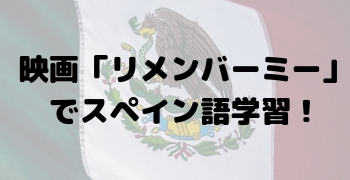asukaです。
先日テレビで、
外国人はどんな日本食が好きなのか?
という調査をやっていました。
お寿司やすき焼きなどの定番のものから、卵焼き、お菓子、ラーメン、カレーライスなど、、
日本食は世界の多くの人から好まれているみたいですね。
普段何気なく食べているけれど、日本食って本当に幅広いんだなと改めて感心してしまいました!
今日は大人気の日本食の一つ、
「天ぷら」
を英語でクッキングしてみたいと思います♪
日本食を作る時に使う料理用語、英語ではなんというの?
も説明します!
今回参考にしたサイトはこちら↓
https://www3.nhk.or.jp/nhkworld/en/radio/cooking/20160513.html
早速、調理行程を見てみましょう♪
Contents
人参を5センチ長さ5ミリ角に切る
①Peel the carrot, trim off the top end, and cut into pieces about 5 cm long.
Cut each piece into slices about 5 mm thick, then into sticks about 5 mm wide.
You should end up with carrot sticks 5 cm long and 5 mm square.
人参の皮をむき、上端を切り落とし、5センチの長さに切る。
それぞれ5ミリの厚さにスライスし、5ミリ幅の棒状に切る。
最終的に5センチの長さ・5ミリ角にする。
人参の切り方について細かく説明していますね。
cut into piecesは「細かく切る」という意味ですが、単語をくっつけるなどしていろいろな表現ができます。
cut ~ into cubes (角切りにする)
cut ~ into dice (さいの目に切る)
cut ~ into five pieces (5等分に切る)
cut ~ into large pieces (大きめに切り分ける)
cut ~ into wedges (くし形に切る)
アスパラガスの下半分だけ皮を薄くむく
②Peel just the bottom ends of the green asparagus thinly, and cut into pieces, each 5 cm long.
アスパラガスの下部分だけ皮を薄くむき、5センチの長さに切り分ける。
じゃがいもの皮をむき、芽を取り除いて、水に漬ける
③Peel the potatoes, remove any sprouts, and cut into slices about 8 mm thick.
Soak in water immediately.
ジャガイモの皮をむき、芽を取り除き、8ミリの厚さにスライスする。
すぐに水に漬ける。
ジャガイモの芽をここでは「sprout」としていますが、日常的には「eye」を使うそうです。
「芽」ですが、「目」と表現します。
日本語で「め」→eye だなんて、面白いですよね。
soakは筑前煮編(https://48english.com/archives/4359)にも出てきました!
「水に浸す」の意味ですね。
(例文)
Cut out any eyes using the tip of a knife.
(包丁の先端を使って芽を取り除く)
玉ねぎの皮をむき、根を取って、筋に沿ってスライスする
④Peel the onion, trim the root end, and cut into 5 mm thick slices, making evenly cut slices along the grain.
玉ねぎの皮をむき、根本を切り取って、5ミリの厚さに目に沿って均一にスライスする。
薬味のレモンをくし切りにする
⑤Cut the lemon, a condiment, into 8 wedges.
薬味のレモンを8つにくし形に切る。
condimentは「薬味」と訳しましたが、調味料、香辛料という意味があります。
調味料、香辛料と言えばseasoningという単語がありますが、どう違うのかと言うと、
seasoning → 調理中に味付けとして使うもの(塩、コショウなど)
condiment → 調理後、食べる時に足すもの(ケチャップ、マスタードなど)
だそうです。
レモンは食べる前に天ぷらにかけるためのものですから、「condiment」ですね!
(例文)
This soup needs more seasonings.
(このスープはもっと調味料が必要だ)
Yuzu-Kosyo is a popular condiment in Japan.
(柚子胡椒は日本で人気の調味料です)
衣用の生地を作る。溶き卵と冷水、小麦粉を混ぜる
⑥Next, the batter. Take a bowl, add the beaten egg and chilled water and mix well, then add the flour and mix again.
次に、衣用の生地です。
ボールに溶き卵と冷水を入れてよく混ぜ、小麦粉を加えてさらに混ぜる。
batter は、野球のバッターでもバター(butter)でもありません!
天ぷらの衣用の生地のように、小麦粉に水などを混ぜたもののことを言います。
beaten egg は「溶き卵」ですね。
野菜に小麦粉をまぶす。大さじ、小さじは、英語で?
⑦Dredge the vegetables with a little flour.
Place about a tablespoon of flour on a piece of paper, and coat the vegetables well with the flour using your hands.
Drain the potatoes well before coating with the flour.
野菜に少量の小麦粉をまぶす。
ペーパーに大さじ1杯くらいの小麦粉を置き、手で野菜に小麦粉を付ける。
じゃがいもは小麦粉を付ける前に水気を切る。
dredge with a flour で「小麦粉をまぶす(つける)」という意味だそうです。
他にも、
coat ~with flour
sprinkle flour on ~
cover ~ with flour
などと表現することができます。
tablespoonは「大さじ」のことです。
略してtbspと表記されていることが多いですね。
「小さじ」はteaspoon(tsp)です。
drainは「水を切る」という意味で、
drain the spaghetti(スパゲティの水を切る)、drain the rice(お米の水を切る)など、
料理には欠かせない表現ですね!
油を熱する。生地が沈んで、すぐに浮いてきたら160度!
⑧Heat the oil until it reaches 160 degrees Celsius.
Drop a tiny bit of batter into the oil. Even if the batter sinks, if it comes floating right up again, then the oil has reached 160 degrees.
油を160℃まで熱し、生地を少し油に落とす。
生地が沈んでも、すぐに浮いてきたら、160℃に達しているということ。
じゃがいも、アスパラガスに生地をつけ、3~4分揚げる。
⑨First, fry the potatoes.
Coat with plenty of batter, then fry for 3 to 4 minutes.
Fry the asparagus in the same way.
まず、じゃがいもを揚げる。
生地を十分につけ、3~4分間揚げる。
アスパラガスも同じように揚げる。
⑩When the vegetables have floated all the way up, and there are almost no bubbles at the surface of the oil, drain off the oil well, and take the vegetables out of the pan.
野菜が上に浮いてきて、油の表面に泡がほとんどなくなったら、油を良く切って鍋から上げる。
玉ねぎ、人参を、おたまに乗せて揚げる
⑪Coat the onions with the batter, pile them onto a large spoon, then gently drop into the oil heated to 160 degrees.
Then prod the middle of the onions at once with some chopsticks.
玉ねぎに生地をつけて、大きいスプーンの上に重ね、160℃に熱した油に優しく落とす。
すぐに玉ねぎの真ん中を箸でつつく。
large spoon とありますが、「おたま」と言いたい場合はladleの方が一般的です。
日本語でも、レードルって使ったりしますよね。
⑫After the batter becomes firm from the heat and takes on shape, turn it over.
Once the bubbles at the surface disappear and the onions float to the surface, then drain off the oil well and take out of the pan.
Fry the carrots in the same way.
生地が固くなり形になったら、ひっくり返す。
表面の泡が消えて玉ねぎが表面に上がってきたら、油を良く切って鍋から上げる。
人参も同じように揚げる。
揚げたて天ぷらを盛り付ける!
⑬Place the freshly-fried tempura onto a plate, garnish with the salt and lemon, and enjoy!
揚げたての天ぷらをお皿に置き、お塩とレモンを添えて、召し上がれ!
freshly-friedは「揚げたての」という意味です。
マクドナルドでポテトが揚げたてホクホクだった時って、嬉しいですよねぇ。
そういう時は、
it’s freshly-fried!
と言えますね♪
他にも「できたて」や「揚げたて」を意味する表現として、
fresh-prepared ~
fresh hot ~
fresh-cooked ~
fresh-made ~
なんて言い方ができますよ。
garnish は「飾る、添える」という意味です。
garnish ~ with … で、~に…を添える、飾るとなります。
名詞として「料理の付け合わせ(飾り)」という使い方もできます。
料理は目で楽しむ!なんて言われるくらい、出来上がりの見た目って重要です。
例えばハンバーグプレートにクレソンの緑がちょこっと入るだけで、一気に美味しそう度合いがアップしますもんねっ!
和食だと、お刺身についているつまやシソ、はじかみやレモンに紅ショウガなど、お料理を彩る“飾り”ってたくさんありますね。
(例文)
Tsuma is a garnish used for sashimi dish.
(つまは、お刺身に使われる飾りです。)
She garnished the fish with parsley.
(彼女は魚にパセリを付けた。)
I’d like to use parsley to garnish a salad.
(サラダの付け合わせにパセリを使いたい。)
いかがでしたでしょうか。
condimentやbatter、freshly-friedなど、使えそうな表現が結構ありましたね。
揚げたての天ぷらが食べたくなっちゃいました!
日本食の繊細な味付けや見た目の美しさを、より多くの外国人の皆さまに知ってもらいたいですね♪
筑前煮の作り方を英語で詳しく説明!【日本食の料理用語】もご覧ください♪
(written by asuka)
2017年夏に第一子を出産した専業主婦です。
英語を勉強するのが趣味!と自己紹介していたほど英語が好きで、学生時代にはTOEICの勉強にドはまり。オーストラリアやニュージーランド、アメリカへの短期留学の経験があり、海外旅行も大好き。 妊娠するまで7年ほど英会話教室に通っていました。
今英語の勉強を頑張っている皆さんのお役に立てるようなコンテンツや、海外で経験したエピソードなどをご紹介していきます!













